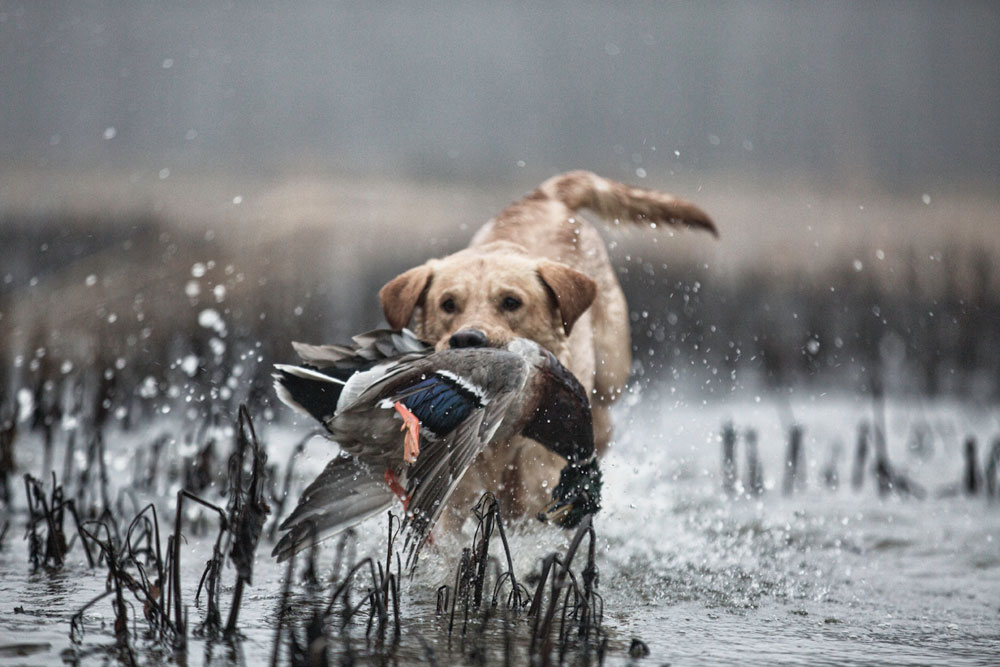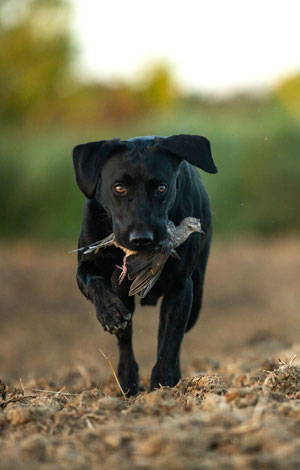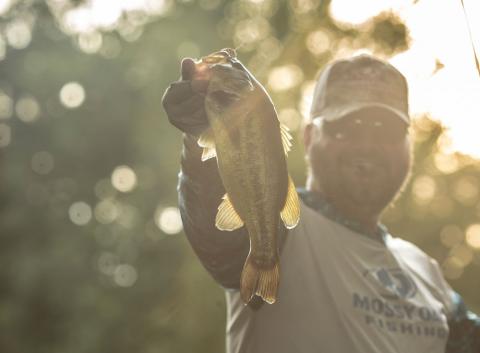
How many times have you been waterfowl or upland hunting and you shot at but only nicked the bird? The bird sailed down and you cast your dog, watched as he picked up the bird and returned it to you, but dropped the still live bird at your feet. The bird then flew off or disappeared into heavy cover and was never found. From a conservation standpoint, this is not good, because the wounded bird is likely to die from its wounds and many will kill another bird to reach their limit; thereby, negatively impacting the numbers of a valuable wildlife resource.
That is why, when hunting with a retriever, it is very important to have a dog that properly holds a bird without dropping it, crushing it, or chewing it. You certainly don’t want your dog dropping a wounded bird only to have it disappear into cover with no chance of a recovery. And you don’t want your dog to bite through the skin or mutilate the bird by chewing it and ruining the meat. Contrary to what some may think, the act of dropping a dummy or bird on the way in, then picking it up again, and the act of dropping a bird before delivery, albeit from the front or from the side, are two different training issues and each requires its own separate fix.
Dropping the dummy on the way in: The mere fact that your pup is dropping the bird or dummy on the way in, regardless of whether he drops it once, twice, three times or more, is in my opinion, caused by “too soft of a mouth” and presents a situation that needs to be addressed and corrected. The question is what corrective actions can you, the trainer, take to firm up your dog’s hold on the dummy and/or the bird? To properly address this issue, you will need the following training aids:
1. A hard plastic dummy or a training buck
2. A slip collar
Once you have these aids, you are ready to begin. The actions you can take to correct this fault are fairly straight forward and easy to apply. First, assuming your dog has been trained to heel on your left side, prepare the slip lead by holding the lead so that it forms a “p.” Then while facing your dog, place the slip lead over your dog’s head and onto its neck. When properly placed on your dog, with your dog sitting or standing on your left side, the lead will instantly release all pressure on him when you let slack in the lead. If you do not get instant release, the slip lead is not properly placed on your dog.
After determining that you have properly put the slip lead on your dog, sit your dog in front of and facing you. Give the command “hold,” then place the dummy in pup’s mouth. With the dummy in pup’s mouth, and with one hand holding the slip lead, use your other hand to grip the dummy on one end, and then move the dummy in a slight up and down motion while repeating the “hold” command. Repeat this five times and then give the dog a break. Repeat this sequence five more times and quit for the day.
 What does this do? The up and down motion of the dummy will gradually cause your dog to increase his grip on the dummy. As the firmness of the dogs grip increases, reward pup by rubbing him briskly down his neck and back with your hand and in a soft voice giving him a few “good boys.” It may take a few sessions of repeating this scenario until your dog’s grip is firmed up. All you’re looking for here is a good firm grip on the dummy; you are not looking for a crushing grip, one that will crush the bird and leave tooth punctures in the skin and meat.
What does this do? The up and down motion of the dummy will gradually cause your dog to increase his grip on the dummy. As the firmness of the dogs grip increases, reward pup by rubbing him briskly down his neck and back with your hand and in a soft voice giving him a few “good boys.” It may take a few sessions of repeating this scenario until your dog’s grip is firmed up. All you’re looking for here is a good firm grip on the dummy; you are not looking for a crushing grip, one that will crush the bird and leave tooth punctures in the skin and meat.
The other hold issue is when your dog is dropping the dummy at your feet rather than holding it, tilting his head up, and delivering it to hand. While there are many causes of dropping, one of the most prevalent causes is incessantly throwing marks and then on the return, grabbing the dummy out of the dog’s mouth as it runs by, and immediately throwing another mark. Rather than bringing the current retrieve to a completion, one act blurs into another, thus the dog is thrown off. I have observed and listened, and as a trainer attempted to justify this by verbalizing that this was building the dog’s “prey drive” by having the dog retrieve, retrieve, retrieve, retrieve, and that these multiple retrieves are the name of the game while completely ignoring any semblance of obedience.
My take on this different style of training program is it advocates that at an early age the dog should not be steadied; instead, the pup should be allowed to break on the launch or throw of the dummy, go out as fast as he can, come back as fast as he can, and on the return, the trainer grabs the dummy and throws another mark as fast as possible. I simply view this as excessive marking and opine that if you rely on this nonsensical approach to train your dog, he will soon learn that when he returns with the dummy and drops it at your feet, the retrieving game speeds up and he gets more of his reward, that is, more retrieves.
Consequently, the trainer is conditioning the dog to break, not come to heel on the return, then sit and present the dummy. The end result is that the trainer has wittingly or unwittingly trained in several unwanted behaviors, and at some point, these issues will have to be addressed and at best, hope that they can be eliminated or at least suppressed.
Assuming that your dog only occasionally drops the dummy and that dropping has not become a conditioned habit, dropping on the return can be fairly easy to correct. When the pup drops the dummy at your feet or even a short distance away, an immediate correction is mandated. Correct him by grabbing him by the scruff of his neck with one hand, holding pup firmly, pick the dummy up and command “hold” as you place it in pup’s mouth. Once the dummy is in his mouth, immediately put your other hand under his chin, and place your thumb in the “V” of his chin to hold his chin up and his mouth intact with the dummy to keep him from dropping it, and repeat the command “hold.” After a short time, command “give” and take the dummy from pup. As before, repeat this sequence five times and then give the dog a break. Then repeat this sequence five more times and quit for the day. After two or three days you should have eliminated this issue.
At the successful completion of each sequence with your dog, reward him verbally and by firmly rubbing him down the back and spine with your hand. The benefits derived from the firm rubbing action are twofold: firstly, the stimulation feels good to the pup and thus rewards pup for a task well done; secondly, it also teaches your dog to remain steady and keeps him from jumping up on you. It should not take many repeat sessions until your dog firmly holds the dummy and tilts his head up to present the dummy to you.



























